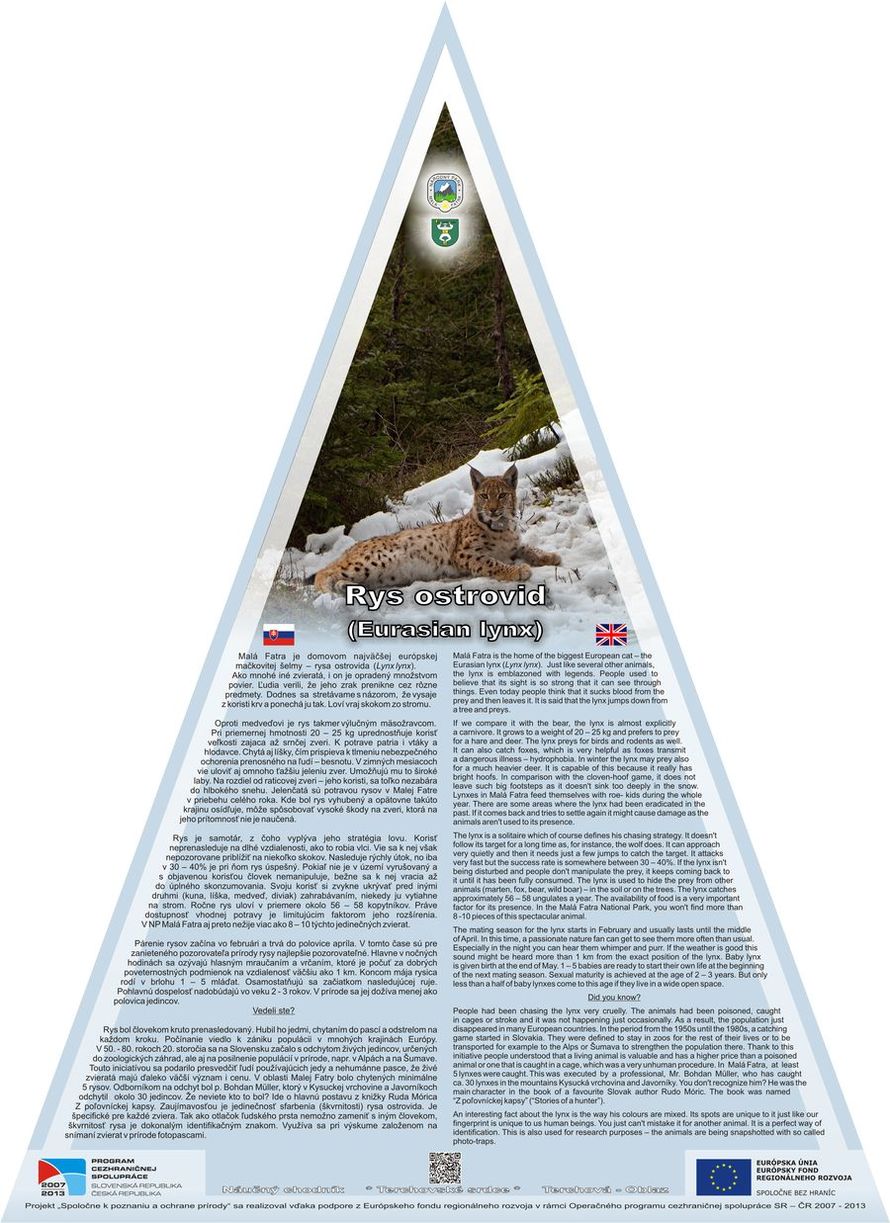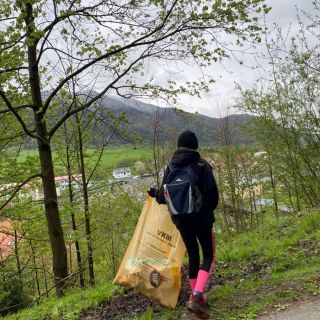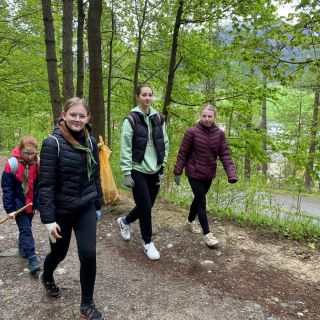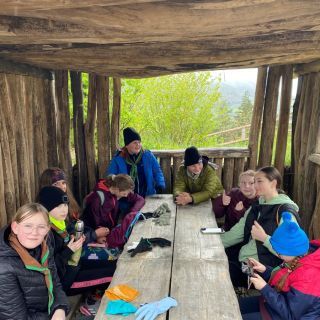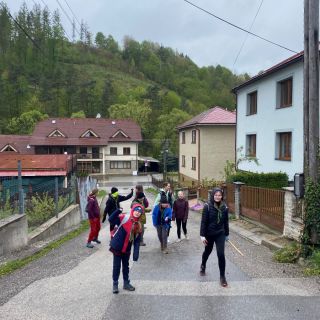Tabuľa 10 – Rys ostrovid
Malá Fatra je domovom najväčšej európskej mačkovitej šelmy – rysa ostrovida (Lynx lynx). Ako mnohé iné zvieratá, i on je opradený množstvom povier. Ľudia verili, že jeho zrak prenikne cez rôzne predmety. Dodnes sa stretávame s názorom, že vysaje z koristi krv a ponechá ju tak. Loví vraj skokom zo stromu.
Oproti medveďovi je rys takmer výlučným mäsožravcom. Pri priemernej hmotnosti 20 – 25 kg uprednostňuje korisť veľkosti zajaca až srnčej zveri. K potrave patria i vtáky a hlodavce. Chytá aj líšky, čím prispieva k tlmeniu nebezpečného ochorenia prenosného na ľudí – besnotu. V zimných mesiacoch vie uloviť aj omnoho ťažšiu jeleniu zver. Umožňujú mu to široké laby. Na rozdiel od raticovej zveri – jeho koristi, sa toľko nezabára do hlbokého snehu. Jelenčatá sú potravou rysov v Malej Fatre v priebehu celého roka. Kde bol rys vyhubený a opätovne takúto krajinu osídľuje, môže spôsobovať vysoké škody na zveri, ktorá na jeho prítomnosť nie je naučená.
Rys je samotár, z čoho vyplýva jeho stratégia lovu. Korisť neprenasleduje na dlhé vzdialenosti, ako to robia vlci. Vie sa k nej však nepozorovane priblížiť na niekoľko skokov. Nasleduje rýchly útok, no iba v 30 – 40% je pri ňom rys úspešný. Pokiaľ nie je v území vyrušovaný a s objavenou korisťou človek nemanipuluje, bežne sa k nej vracia až do úplného skonzumovania. Svoju korisť si zvykne ukrývať pred inými druhmi (kuna, líška, medveď, diviak) zahrabávaním, niekedy ju vytiahne na strom. Ročne rys uloví v priemere okolo 56 – 58 kopytníkov. Práve dostupnosť vhodnej potravy je limitujúcim faktorom jeho rozšírenia. V NP Malá Fatra aj preto nežije viac ako 8 – 10 týchto jedinečných zvierat.
Párenie rysov začína vo februári a trvá do polovice apríla. V tomto čase sú pre zanieteného pozorovateľa prírody rysy najlepšie pozorovateľné. Hlavne v nočných hodinách sa ozývajú hlasným mraučaním a vrčaním, ktoré je počuť za dobrých poveternostných podmienok na vzdialenosť väčšiu ako 1 km. Koncom mája rysica rodí v brlohu 1 – 5 mláďat. Osamostatňujú sa začiatkom nasledujúcej ruje. Pohlavnú dospelosť nadobúdajú vo veku 2 - 3 rokov. V prírode sa jej dožíva menej ako polovica jedincov.
Vedeli ste?
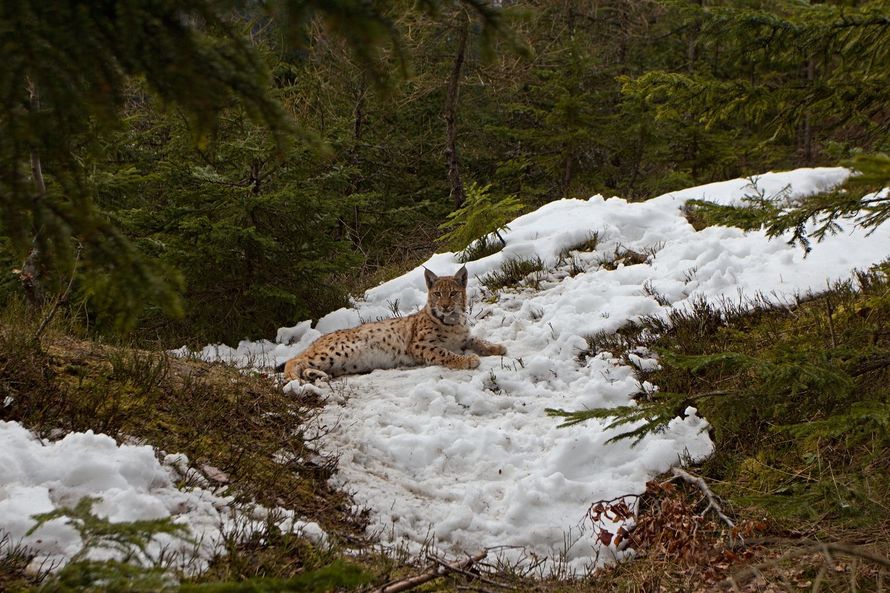 Rys bol človekom kruto prenasledovaný. Hubil ho jedmi, chytaním do pascí a odstrelom na každom kroku. Počínanie viedlo k zániku populácii v mnohých krajinách Európy. V 50. - 80. rokoch 20. storočia sa na Slovensku začalo s odchytom živých jedincov, určených do zoologických záhrad, ale aj na posilnenie populácií v prírode napr. v Alpách a na Šumave. Touto iniciatívou sa podarilo presvedčiť ľudí používajúcich jedy a nehumánne pasce, že živé zvieratá majú ďaleko väčší význam i cenu. V oblasti Malej Fatry bolo chytených minimálne 5 rysov. Odborníkom na odchyt bol p. Bohdan Müller, ktorý v Kysuckej vrchovine a Javorníkoch odchytil okolo 30 jedincov. Že neviete kto to bol? Ide o hlavnú postavu z knižky Ruda Mórica – Z poľovníckej kapsy.
Rys bol človekom kruto prenasledovaný. Hubil ho jedmi, chytaním do pascí a odstrelom na každom kroku. Počínanie viedlo k zániku populácii v mnohých krajinách Európy. V 50. - 80. rokoch 20. storočia sa na Slovensku začalo s odchytom živých jedincov, určených do zoologických záhrad, ale aj na posilnenie populácií v prírode napr. v Alpách a na Šumave. Touto iniciatívou sa podarilo presvedčiť ľudí používajúcich jedy a nehumánne pasce, že živé zvieratá majú ďaleko väčší význam i cenu. V oblasti Malej Fatry bolo chytených minimálne 5 rysov. Odborníkom na odchyt bol p. Bohdan Müller, ktorý v Kysuckej vrchovine a Javorníkoch odchytil okolo 30 jedincov. Že neviete kto to bol? Ide o hlavnú postavu z knižky Ruda Mórica – Z poľovníckej kapsy.
Zaujímavosťou je jedinečnosť sfarbenia (škvrnitosti) rysa ostrovida. Je špecifické pre každé zviera. Tak ako otlačok ľudského prsta nemožno zameniť s iným človekom, škvrnitosť rysa je dokonalým identifikačným znakom. Využíva sa pri výskume založenom na snímaní zvierat v prírode fotopascami.
Panel 10 – Eurasian lynx
Malá Fatra is the home of the biggest European cat – the Eurasian lynx (Lynx lynx). Just like several other animals, the lynx is emblazoned with legends. People used to believe that its sight is so strong that it can see through things. Even today people think that it sucks blood from the prey and then leaves it. It is said that the lynx jumps down from a tree and preys.
If we compare it with the bear, the lynx is almost explicitly a carnivore. It grows to a weight of 20 – 25 kg and prefers to prey for a hare and deer. The lynx preys for birds and rodents as well. It can also catch foxes, which is very helpful as foxes transmit a dangerous illness – hydrophobia. In winter the lynx may prey also for a much heavier deer. It is capable of this because it really has bright hoofs. In comparison with the cloven-hoof game, it does not leave such big footsteps as it doesn't sink too deeply in the snow. Lynxes in Malá Fatra feed themselves with roe- kids during the whole year. There are some areas where the lynx had been eradicated in the past. If it comes back and tries to settle again it might cause damage as the animals aren't used to its presence.
The lynx is a solitaire which of course defines his chasing strategy. It doesn't follow its target for a long time as, for instance, the wolf does. It can approach very quietly and then it needs just a few jumps to catch the target. It attacks very fast but the success rate is somewhere between 30 – 40%. If the lynx isn't being disturbed and people don't manipulate the prey, it keeps coming back to it until it has been fully consumed. The lynx is used to hide the prey from other animals (marten, fox, bear, wild boar) – in the soil or on the trees. The lynx catches approximately 56 – 58 ungulates a year. The availability of food is a very important factor for its presence. In the Malá Fatra National Park, you won't find more than 8 -10 pieces of this spectacular animal.
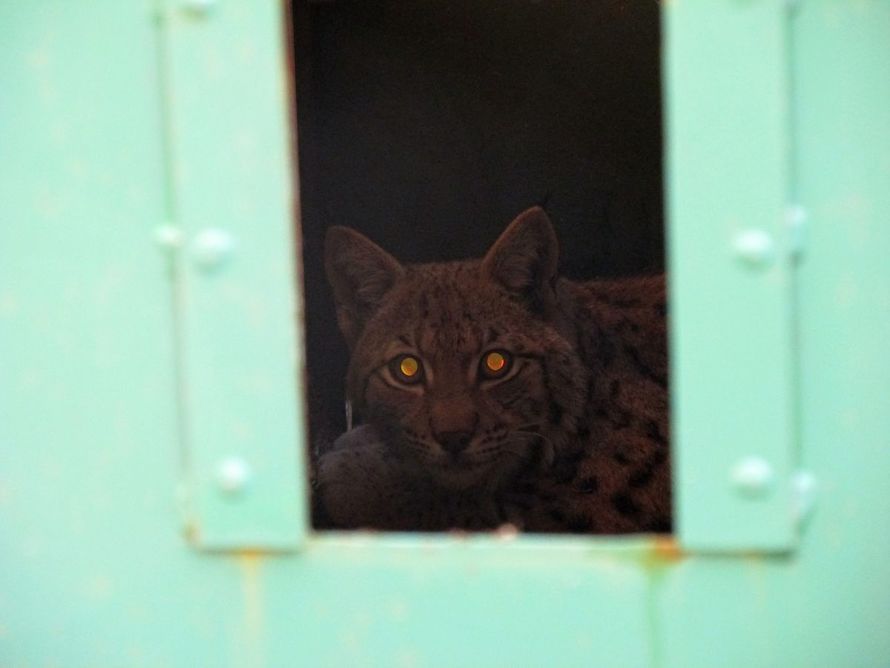 The mating season for the lynx starts in February and usually lasts until the middle of April. In this time, a passionate nature fan can get to see them more often than usual. Especially in the night you can hear them whimper and purr. If the weather is good this sound might be heard more than 1 km from the exact position of the lynx. Baby lynx is given birth at the end of May. 1 – 5 babies are ready to start their own life at the beginning of the next mating season. Sexual maturity is achieved at the age of 2 – 3 years. But only less than a half of baby lynxes come to this age if they live in a wide open space.
The mating season for the lynx starts in February and usually lasts until the middle of April. In this time, a passionate nature fan can get to see them more often than usual. Especially in the night you can hear them whimper and purr. If the weather is good this sound might be heard more than 1 km from the exact position of the lynx. Baby lynx is given birth at the end of May. 1 – 5 babies are ready to start their own life at the beginning of the next mating season. Sexual maturity is achieved at the age of 2 – 3 years. But only less than a half of baby lynxes come to this age if they live in a wide open space.
Did you know?
People had been chasing the lynx very cruelly. The animals had been poisoned, caught in cages or stroke and it was not happening just occasionally. As a result, the population just disappeared in many European countries. In the period from the 1950s until the 1980s, a catching game started in Slovakia. They were defined to stay in zoos for the rest of their lives or to be transported for example to the Alps or Šumava to strengthen the population there. Thank to this initiative people understood that a living animal is valuable and has a higher price than a poisoned animal or one that is caught in a cage, which was a very unhuman procedure. In Malá Fatra, at least 5 lynxes were caught. This was executed by a professional, Mr. Bohdan Müller, who has caught ca. 30 lynxes in the mountains Kysucká vrchovina and Javorníky. You don't recognize him? He was the main character in the book of a favourite Slovak author Rudo Móric. The book was named “Z poľovníckej kapsy” (“Stories of a hunter”).
An interesting fact about the lynx is the way his colours are mixed. Its spots are unique to it just like our fingerprint is unique to us human beings. You just can't mistake it for another animal. It is a perfect way of identification. This is also used for research purposes – the animals are being snapshotted with so called photo-traps.

